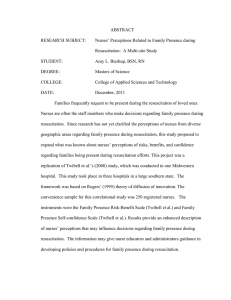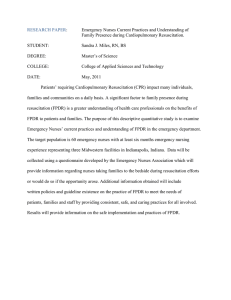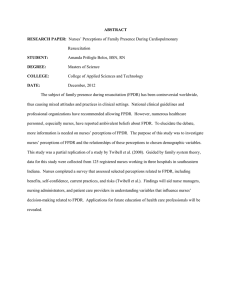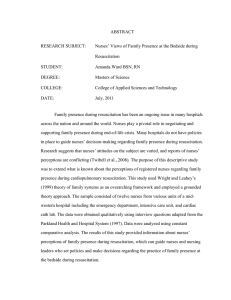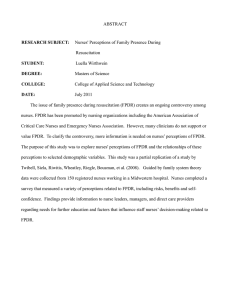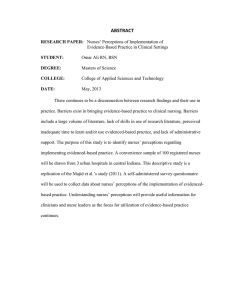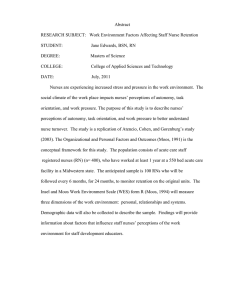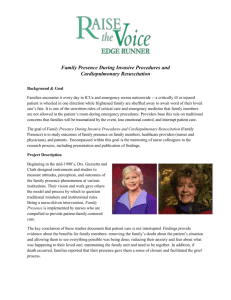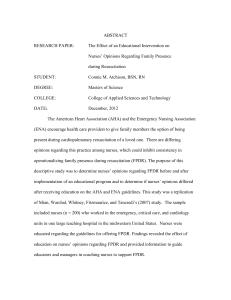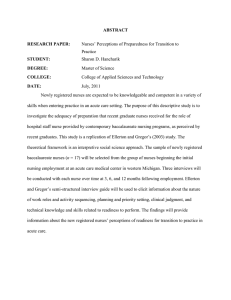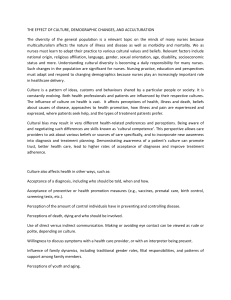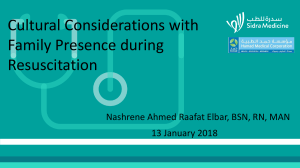FPDR: Nurses' Perceptions of Family Presence During Resuscitation
advertisement
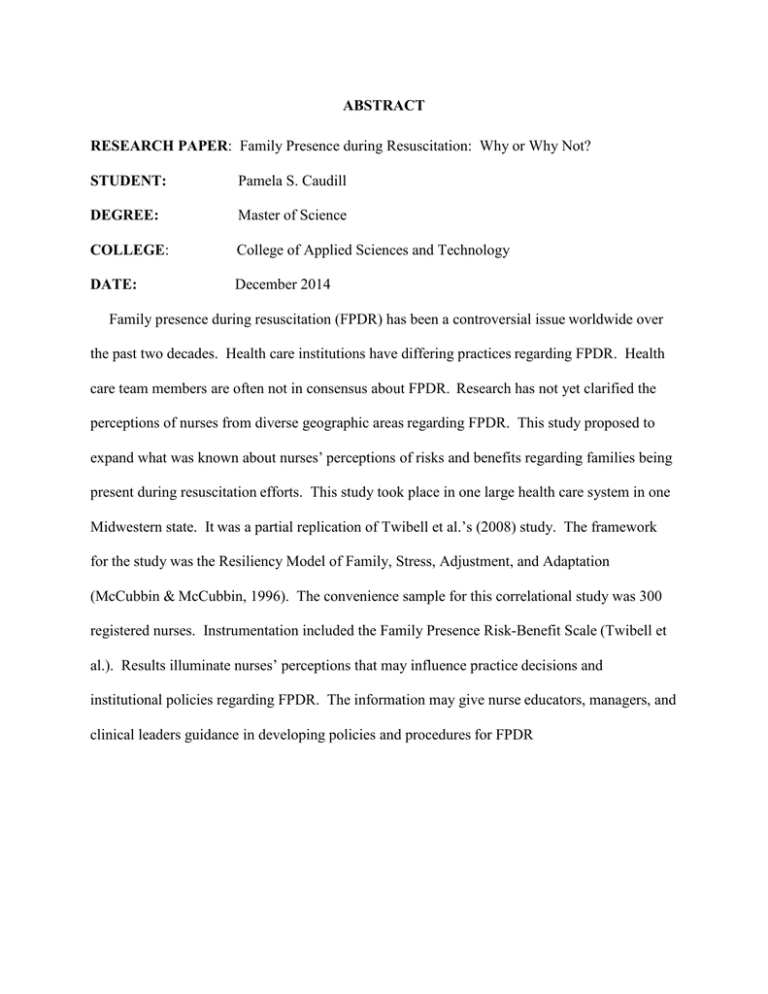
ABSTRACT RESEARCH PAPER: Family Presence during Resuscitation: Why or Why Not? STUDENT: Pamela S. Caudill DEGREE: Master of Science COLLEGE: College of Applied Sciences and Technology DATE: December 2014 Family presence during resuscitation (FPDR) has been a controversial issue worldwide over the past two decades. Health care institutions have differing practices regarding FPDR. Health care team members are often not in consensus about FPDR. Research has not yet clarified the perceptions of nurses from diverse geographic areas regarding FPDR. This study proposed to expand what was known about nurses’ perceptions of risks and benefits regarding families being present during resuscitation efforts. This study took place in one large health care system in one Midwestern state. It was a partial replication of Twibell et al.’s (2008) study. The framework for the study was the Resiliency Model of Family, Stress, Adjustment, and Adaptation (McCubbin & McCubbin, 1996). The convenience sample for this correlational study was 300 registered nurses. Instrumentation included the Family Presence Risk-Benefit Scale (Twibell et al.). Results illuminate nurses’ perceptions that may influence practice decisions and institutional policies regarding FPDR. The information may give nurse educators, managers, and clinical leaders guidance in developing policies and procedures for FPDR
